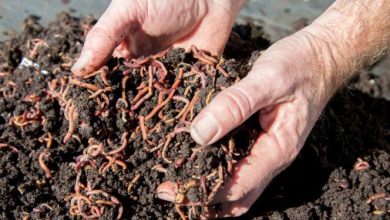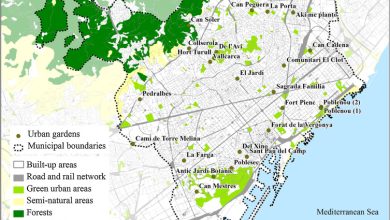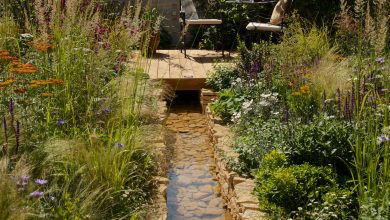Planting a Plum Tree: [Care, Planting, Irrigation and Pests]
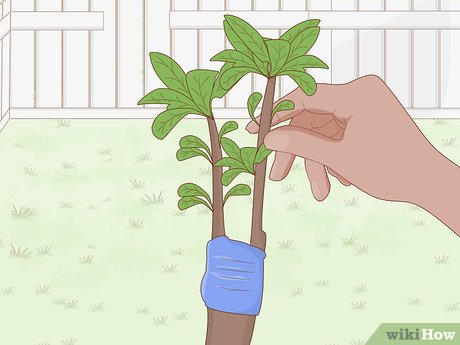
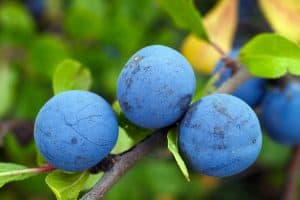 When we want to have good fruit in the garden of the house or in a field, planting a plum tree is an excellent alternative.
When we want to have good fruit in the garden of the house or in a field, planting a plum tree is an excellent alternative.
The main reason is that it produces a large number of fruits and plums are delicious fruits that you want to consume throughout the year.
In addition, we have to consider that their maturation process is much faster than other species, so you can eat them first.
Important points when planting a plum tree
- When? Ideal during the spring.

- Where? It adapts very well to any site, even in semi shade.
- Growing time? It is a fast-growing tree, so in a few years it can be leafy and bear many fruits.
- How do we prepare the land? Moved earth, which is not excessively acid. Wet but not too wet.
- How do we water? It does not need a lot of water, except in summer (which we will water twice a week). The rest of the year, it is not necessary to water it if it usually rains or is humid.
- Favorable associations? The hazelnut, the vine and the guayano.
- Plagues and diseases? Leprosy, mites.
When to plant a plum?
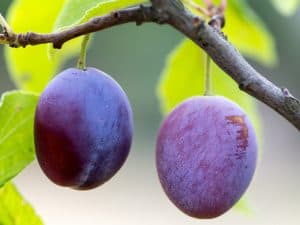 We all like temperate climates and so do plum trees, which is why it is the best time to decide to plant them.
We all like temperate climates and so do plum trees, which is why it is the best time to decide to plant them.
Due to their characteristics, they can withstand temperatures somewhat lower than 15º C and also some higher degrees.
But this condition does not apply during frosts, especially when it comes to late frosts.
The reason for this is that their flower buds usually appear much earlier than other species and a late frost could cause fatal damage to them.
Where to plant a plum tree?
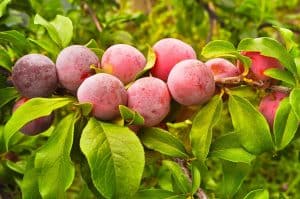 The decision of the most suitable place to plant plum will depend on you, as it tends to adapt very well to different conditions.
The decision of the most suitable place to plant plum will depend on you, as it tends to adapt very well to different conditions.
If in the space you have available the soil is rather moist and not very deep, you can plant it and it will behave well.
In case what you have is a light soil and without much humidity, congratulations, because you will give it just what it wants.
As it is adaptable to all these scenarios, you may have a floor that does not occupy either of the two levels and that should not cause you concern.
The reason is that the plum tree is very adaptable and even if the soil does not meet the preferred characteristics, we can always lend a hand to improve it and that is exactly what we will see below.
How to prepare the land for growing plum trees?
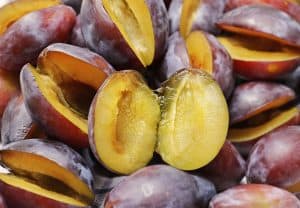 The preparation of the land will be carried out without major complications, first verifying the pH of the soil.
The preparation of the land will be carried out without major complications, first verifying the pH of the soil.
If it is very acidic, a product will be applied to lower the level and make the plum more comfortable.
If it has excess moisture, you could wait a few days for it to dry as much as possible.
It is important to never plant a plum tree in soil that is full of puddles, as this could be detrimental to the roots.
It is also not a good idea to have large rocks that can prevent the roots from expanding to their liking.
In the event that the land has these formations, it is best to clean it before proceeding to sow.
How do we water the plum tree?
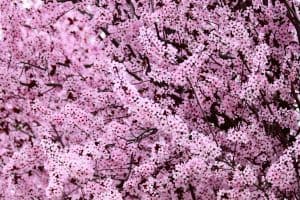 In general, the plum tree does not get along very well with humidity, as we have already seen above.
In general, the plum tree does not get along very well with humidity, as we have already seen above.
But that does not mean that it does not need water in appropriate amounts to develop and bear fruit.
So in this task , how the climate is working at each stage will play a leading role.
If there is constant rain, it will not be necessary to water.
If summer has already arrived, you should consider doing it 1 or 2 times a week depending on how the terrain looks.
A good key to understanding what amount is ideal is to check that the soil is somewhat clear, but without allowing it to crack.
How do we sow step by step?
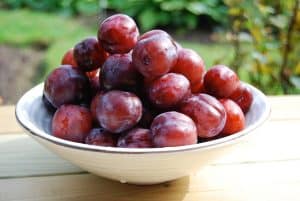 The sowing of the plum tree can be done through seedlings developed inside the house or with those that are already worked in nurseries.
The sowing of the plum tree can be done through seedlings developed inside the house or with those that are already worked in nurseries.
Doing it at home will take about four months and the process will consist of placing the dry seed in a peat that we can keep in the fridge.
In order for it to be ready for sowing in spring, it is essential to start the process between the months of October and November.
In case it is taken from a nursery, the seedling will be ready to transplant to the garden or space where it is going to be planted.
At this point, the plum planting process will be as follows:
- Make a hole in the ground that is large enough for the plum roots to fit comfortably allowing room for them to expand, without the hole needing to be very deep.
- With the earth that was extracted from the hole, the plant will be covered without pressing the soil of the roots to avoid hurting it.
- If the soil is very dry, it will be necessary to water it enough so that the moisture penetrates to the roots, without creating puddles.
- Many people find it comfortable to plant two or more plum trees in the same space and this greatly favors their growth. The main reason is that they will be able to carry out their pollination process together, improving their production capacity.
And since in most cases they are low-rise, the facilities around their care increase a lot.
What favorable associations does the plum tree have?
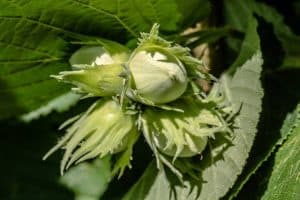 As it is logical that many of us want to have more than one species of tree in the garden, it is worth knowing that the plum tree gets along very well with the hazel.
As it is logical that many of us want to have more than one species of tree in the garden, it is worth knowing that the plum tree gets along very well with the hazel.
It also makes an excellent pairing with other fruit trees such as guava and vines, resulting in a high-value garden.
Around the wood-producing trees , the oak is one of the best companions.
Unfavorable associations?
However, it is very important to keep it away from crops such as potatoes or medlars.
What pests and diseases does the plum tree have?
To know more: Diseases that affect the plum tree.
To ensure that your plum tree is in optimal condition at all times, keep an eye out for the presence of certain pests and diseases.
Leprosy
 One of the most harmful is leprosy, which also attacks other fruit trees such as the peach tree.
One of the most harmful is leprosy, which also attacks other fruit trees such as the peach tree.
Its action causes the leaves to turn red and wrinkle, ending up falling and affecting the proper development of the tree.
Mites
Mites are also frequent, which attack the entire structure of the plant, including the fruits, affecting its proper development.
In cases where the pest has not attacked hard enough, damaged fruit can be harvested and a fungicide applied. Neem oil or potassium soap can be applied.
However, if they are not attacked in time, they could cause severe damage.
If you have already decided to plant a plum tree, make sure you have all this information at hand so that you can enjoy an abundant and delicious harvest.
Brown or brown rot
Brown or brown rot is a fungal-type disease that appears, above all, in humid and hot conditions.
The good part is that it is not usually lethal for our fruit trees. Especially if we manage to treat it in time. It mainly harms our fruits.
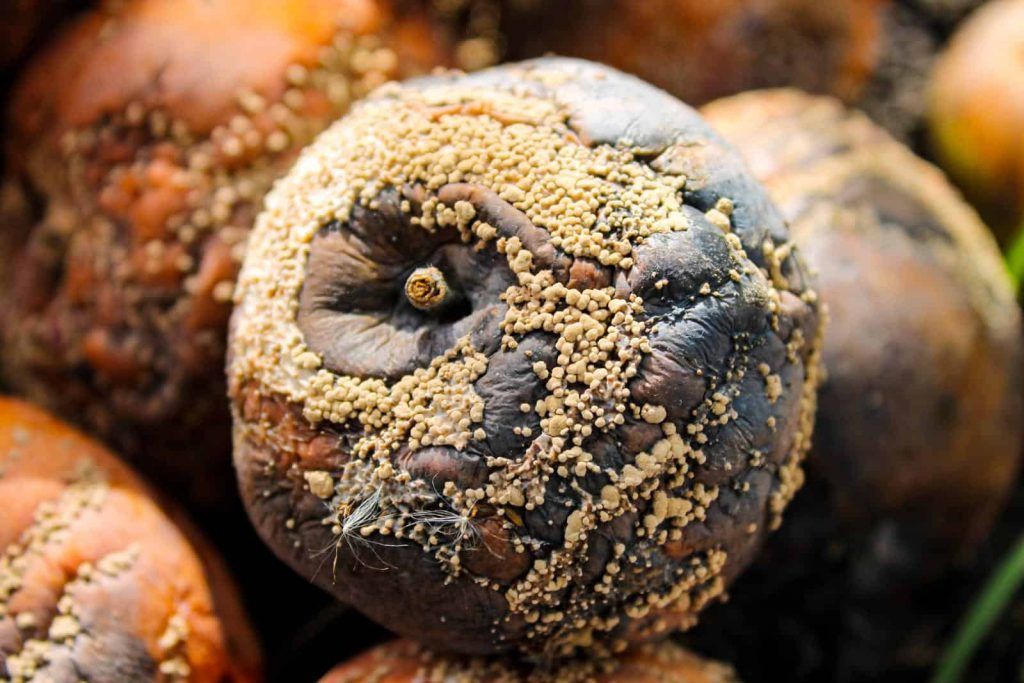
How long does the plum tree live?
It is a plant that has a life expectancy that reaches, under certain care, 50 years.
How long does it take for the plum tree to grow?
The tree develops from the moment it is planted and between 7 and 10 years old it will have reached adulthood.
How long does it take to produce fruit?
The production of plum fruits begins to show it from 2 years after being planted.
Can it be grown in a pot?
The plum tree supports potted cultivation and the enjoyment of annual crops.
How many times does the plum tree produce fruit?
The plum tree generates between 1 and 2 productions each year, reaching an average productivity of 150 fruits.
Should the plum tree be pollinated to obtain fruit?
Yes, plum pollination occurs through the intervention of bees that take charge of the pollen transfer process.
How cold can the plum tree tolerate?
The plum tree needs cold to maintain its productive capacity and this temperature must be below 7° C to be profitable.
How many plum trees can be planted per hectare?
Plum plantations in one hectare support from 700 to 1400 specimens.
What kind of fertilizer does the plum tree need?
It is beneficial to provide nutrients to the plum tree through balanced fertilizers that contain the 3 main macronutrients: nitrogen, phosphorus and potassium.
It is also a good plan to promote fertilization with iron, manganese and zinc chelates.
How much heat and/or drought can the plum tree tolerate?
It is not a lover of excessive heat, so it must be kept below 28° C.
It is better not to subject it to extreme droughts that harm the development of its internal processes.
References and bibliography
- MICROBIAL ACTIVITY AS AN INDICATOR OF
SOIL QUALITY IN ORGANIC PLUM CROPS. - Technical and varietal aspects of use for the ecological cultivation of
plum trees.

![Photo of Lobularia Maritima: [Cultivation, Care, Pests and Diseases]](https://www.complete-gardening.com/wp-content/uploads/2022/08/lobularia-maritima-cultivation-care-pests-and-diseases-390x220.jpg)
